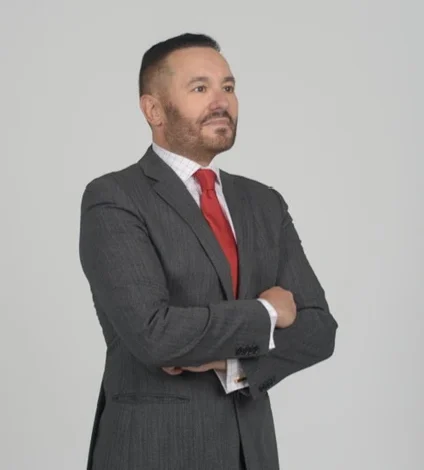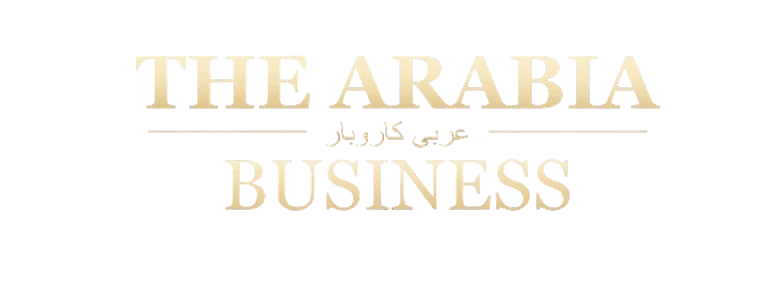Dr. Ignacio Bonasa

Founder and Executive President of Liderarte
Dr. Ignacio Bonasa: Redefining Leadership Through Art and Human Essence
Dr. Ignacio Bonasa is a founder who turned leadership into a human craft, and at Liderarte, he has built a methodology that uses art to develop leaders who connect head, heart, and hands with measurable clarity and cultural impact. As Executive President of Liderarte, he advances a “Learning Through Art” approach buttressed by a 4A model of Aprendizaje (Learning), Actitud (Attitude), Alma (Soul), and Acción (Action), turning experience into action and pain into what he has called a vitamin for the soul.
A New Language of Leadership
At the center of Ignacio Bonasa’s work is a simple premise: art is not decor for leadership; it is a language that unlocks emotional intelligence, creativity, and authenticity at scale. Through Liderarte, he integrates performing arts, music, painting, theater, and poetry into programs that move leaders from technical training to embodied transformation, replacing rote frameworks with lived insight that alters how people decide, collaborate, and sustain purpose under pressure.
This shift reframes leadership development from a curriculum into a studio, where practice cultivates presence and where outcomes show up in clarity of intention, quality of conversation, and resilient cultures, not just in course completion metrics.
Bonasa’s path began in traditional centers of power where he studied law and business, served in banking, and chaired boards. Yet the turning point came when polished success could not quiet an internal dissonance about meaning and impact. Rather than step back from enterprise, he stepped through it with a new lens, translating strategy into service and management into healing, then founding Liderarte to fuse artistic process with leadership outcomes inside organizations navigating uncertainty and change. The entrepreneurial move was not a rejection of structure but a redesign of learning so leaders could access deeper self-knowledge, communicate from essence, and make choices with both rigor and empathy.
The 4A Operating System
Liderarte’s practice rests on a 4A model that clarifies how art becomes leadership muscle: Aprendizaje for continuous learning, Actitud for intentional mindset, Alma for purpose and meaning, and Acción for translating insight into change.
- Aprendizaje anchors reflection and iteration, so leaders observe patterns rather than defend positions, which strengthens adaptability during volatility.
- Alma ensures development is not cosmetic by aligning work with values that endure under stress.
- Acción builds the execution loop that ties experiences to new behaviors and measurable shifts in team dynamics.
Learning Through Art in Practice
In Resetéate sessions and related experiences, participants often arrive blocked, fatigued, or detached from creative energy, then leave with renewed curiosity, confidence, and capacity to frame challenges as design problems rather than threats.
Exercises might use painting to surface implicit assumptions, theater to rehearse difficult conversations, or music to synchronize attention, allowing teams to experiment safely with new ways of listening and leading. The design is experiential by intent: instead of telling people about empathy and courage, the programs stage conditions where empathy and courage must be practiced and then debriefed into commitments.
Executive Artisan Mindset
Bonasa advances the notion of the Executive Artisan, a leader who crafts culture with intention and who refuses to separate who they are from what they do. This leader treats attention as a finite resource, vulnerability as a signal of trustworthiness, and creativity as a performance capability rather than a perk, shaping environments where teams can do the best work of their careers.
The Executive Artisan is not less analytical; they are more integrated, using intuition alongside data to navigate complexity without numbing the human experience that fuels innovation.
Initiatives That Last
Liderarte’s portfolio includes initiatives such as Resetéate and Womentoring that combine artistic modalities with coaching architectures designed for durability inside large systems.
- Womentoring positions creative practice as a medium to build voice, agency, and executive presence.
- Resetéate uses immersive experiences to help leaders interrupt autopilot and choose from a broader repertoire of responses.
The methodology’s power comes from repetition and integration: short cycles of experience, sense-making, and application that convert inspiration into habits leaders can test in meetings, feedback conversations, and strategic reviews.
Culture Outcomes Leaders can Feel
Organizations that adopt art-centered learning consistently report improvements that are both human and operational: better listening, faster recovery from conflict, more grounded decision-making, and higher engagement during strategic pivots.
These outcomes track to a simple engine that art activates: attention, emotion, and embodiment, the triad that allows ideas to move from head knowledge to practiced competence under pressure. In volatile markets, that engine becomes a hedge against fatigue and cynicism, keeping leaders attuned to purpose while executing with clarity and resolve.
A Method with European and Latin Roots
Liderarte’s influence spans Europe and Latin America, drawing on continental traditions that treat art as civic practice and personal discipline, not simply entertainment. That lineage shows up in program design that invites participation from the whole person while honoring performance standards expected by competitive enterprises. The result is a model that feels culturally resonant in many contexts and scalable enough for multinational adoption with local nuance.
Why Art Accelerates Adult Learning
Adult development depends on relevance, autonomy, and immediate application, principles that artistic processes naturally support by making learners co-creators rather than passive recipients.
Art compresses complex emotion into form, which helps leaders metabolize ambiguity and name tensions that spreadsheets cannot surface alone, then carry those insights into agendas, product choices, and talent decisions.
The feedback loop is visceral: people feel the difference in the room and are more likely to sustain new behaviors because they are anchored in memory and meaning, not just instruction.
The paradox is that soft skills are hard to build and harder to measure, yet Bonasa’s programs structure experiences so that insights translate into commitments and observable shifts in behavior. The craft lies in designing thresholds that are challenging but safe, reflective but decisive, expressive but disciplined, so leaders expand their range without diluting performance.
Over time, this builds a cultural signature: direct communication, generous listening, creative problem solving, and the courage to choose meaning over momentum when the two are at odds.
A Leader as Mirror and Maker
Bonasa operates as both mirror and maker: he reflects back the truths teams need to face and designs the conditions where new choices become possible. His interviews and profiles consistently return to a theme of conscious reinvention, the decision to live from essence rather than image, and to anchor leadership in service, impact, and dignity.
That clarity shapes how he hires facilitators, frames client engagements, and curates communities of practitioners who continue to refine the method in practice.
The Road Ahead
Liderarte’s next arc will likely continue to codify its playbook while deepening its global network of Executive Artisans who can deliver consistent transformation alongside local relevance.
With growing attention on well-being, psychological safety, and purpose-driven strategy, the methodology sits at the intersection of leadership capability and human sustainability, a space where art gives enterprise a durable edge.
As markets and technologies evolve, the bet is that the organizations that can metabolize uncertainty through creative practice will learn faster and lead with more humanity and effectiveness.
If there is a single throughline in Ignacio Bonasa’s work, it is that leadership begins where performance meets essence, and art is the shortest path between the two. By inviting leaders to create, to feel, and to act from an integrated center, he offers a method for turning pressure into presence and ambition into service that others can practice, teach, and refine.
In a time defined by speed, his contribution is a rhythm that restores depth and builds cultures capable of delivering results without losing the very people who make them possible.
